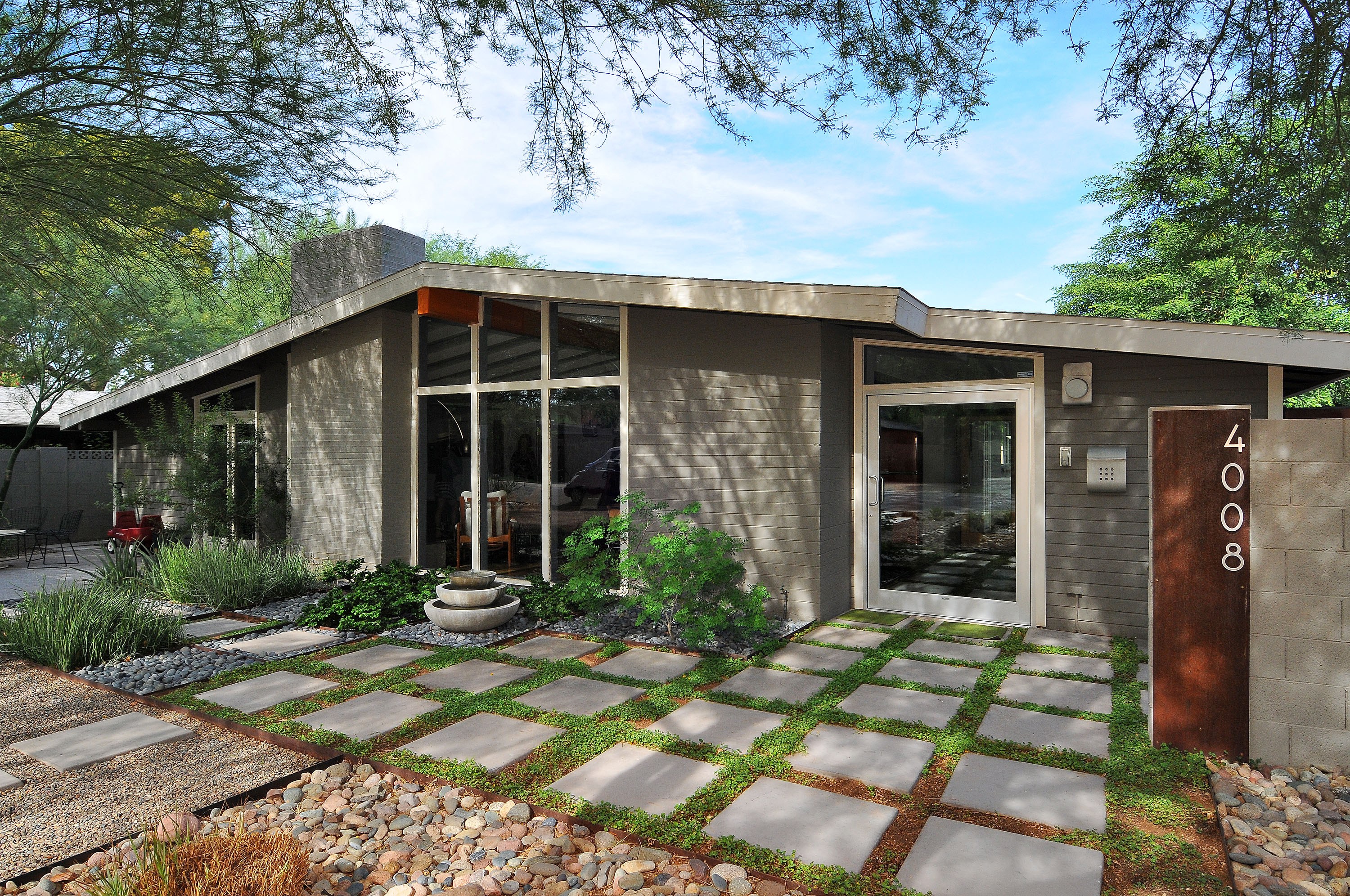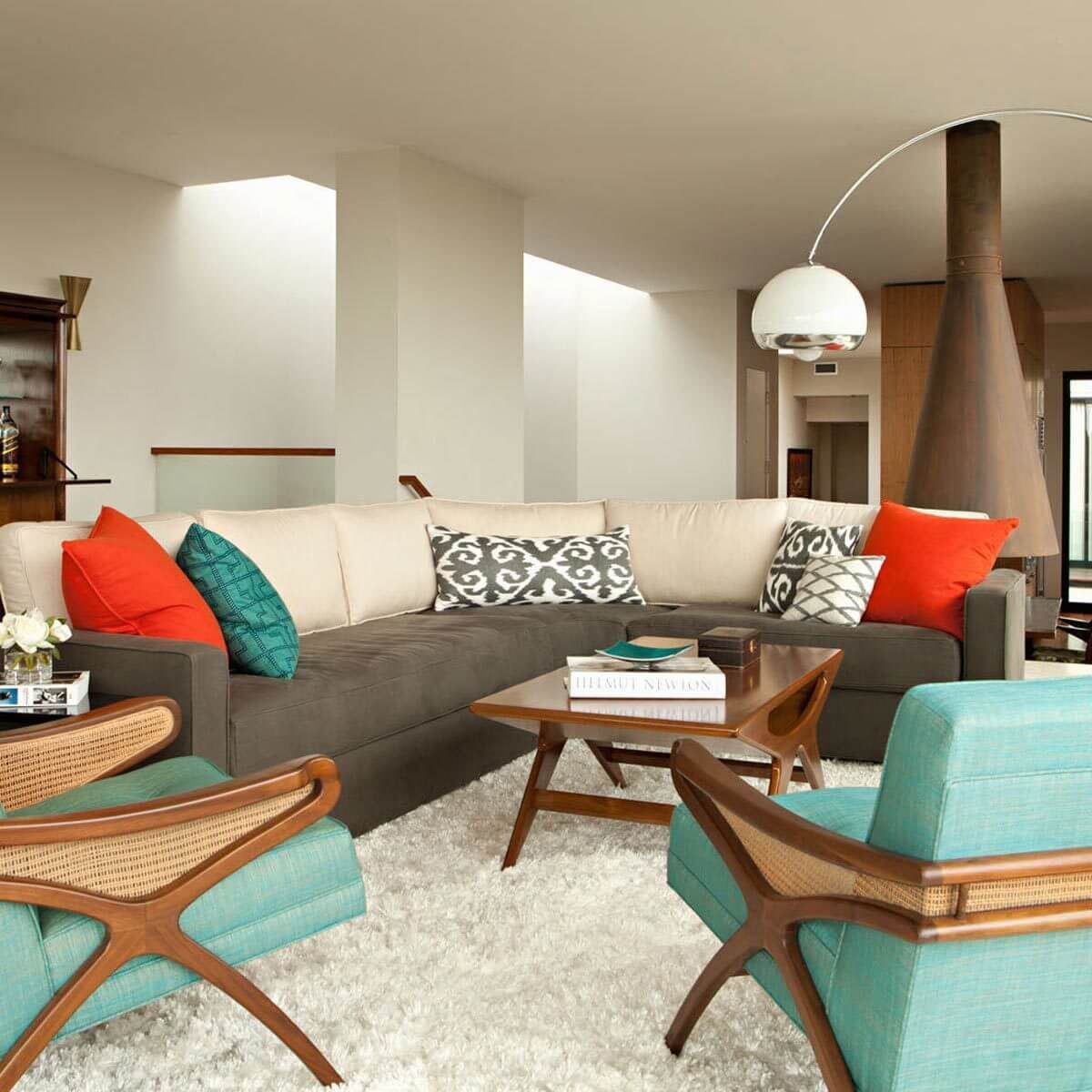Table Of Content

Today, the 3.18-acre spread includes the six-bedrooom and seven-bedroom main house, with its distinctive folded plate roof, along with a detached pool house. Arizona’s sunlit illuminates this desert modernist house, where nature’s palette merges seamlessly with modern comfort in serene harmony. Interior designer Lucy Jeffries breathes new life into this midcentury apartment, to create timeless elegance and modern comfort. Weekly updates on the latest design and architecture vacancies advertised on Dezeen Jobs. Daily updates on the latest design and architecture vacancies advertised on Dezeen Jobs. In the living room, an elegant metal reading light hangs over a mid-century style chair and a cosy rug softens the room's hard surfaces and symmetrical lines.
Plan: #209-1003
One of the most unique of the midcentury-modern homes, Lautner’s Elrod House was immortalized in the 1971 James Bond movie Diamonds Are Forever. Cavelike but not dark thanks to some well-placed large skylights, the Elrod Home is almost verging on UFO territory. As KAA Design’s Grant Kirkpatrick told us, “Palm Springs is a bastion of classic midcentury architecture,” and this is probably among the desert town’s most imaginative structures.
Plan: #193-1170
Six years ago, after being named creative director of the company, he relocated to L.A., where he oversaw the design of more than a dozen Oliver Peoples boutiques in the U.S., Europe, and Asia. “In college I studied business and industrial design, so I learned to approach business from a design perspective and vice versa. It made me realize that interior design is where my true passions lie,” Tagliaferri says. Follow us for a daily dose of outstanding homes, intelligent architecture & beautiful design. The property in question is a 2,757-square-foot single-family home built in 1961. Phipps says she fell in love with the property and knew they had to go see it immediately, but "when we finally got to see the house [in person], we saw it was a lot worse."
Tour the mid-century modern homes of Greenville, SC - GVLtoday
Tour the mid-century modern homes of Greenville, SC.
Posted: Tue, 06 Feb 2024 08:00:00 GMT [source]
Plan: #208-1018
The Bauhaus movement was an important stepping stone leading to the midcentury-modern period, as was MoMA’s 1932 International Style exhibition. Architect Philip Johnson was the director of the show, which was the museum’s first architectural exhibition and featured the work of Richard Neutra, Le Corbusier, Walter Gropius, and other figures whose work would influence and define MCM. The works of Alvar Aalto and Marcel Breuer were also formative for MCM, particularly their furniture designs which continue to resonate today.
His eagle eye for midcentury fixer-uppers is was what first drew him to a house on Rising Glen Road in Los Angeles. “I’m always looking for places to either renovate or to buy, to move up the ladder,” Statham says. It was quite downtrodden and had been neglected, as most of these of midcenturies have.” Statham quickly decided to purchase the place and gut renovate it to serve as a multi-use property for guests, as well as his office and gym.

Only 2,680 Lustron houses were manufactured between 1947 and 1951, ending the dream of Swedish inventor and industrialist Carl G. Strandlund. About 2,000 still stand, marking a significant moment in the history of American residential architecture. Although the original steel roofs have long-since been replaced, the two-foot-square panels of porcelain-enameled steel siding is characteristic of Lustron. Colored in one of four pastel shades — maize yellow, dove grey, surf blue, or desert tan — Lustron siding gives these houses their distinctive look.
"The property was very overgrown, and unfortunately, a lot of the greenery will have to be taken out," Phipps says. After several months of cleaning, the two enlisted their parents' help to get it down to the studs. Now, the couple is working with an engineer to get a new roof on before winter starts this year and has shifted to clearing out the house's grounds.
A Mid-Century Modern Home in California With Ties to Frank Lloyd Wright Lists for $7 Million
Characterized by clean lines, low-pitched or flat rooflines, organic shapes, and an emphasis on indoor-outdoor living, mid-century modern house plans celebrate the marriage of form and function. Ludwig Mies van der Rohe’s Plano, Illinois, structure is a steel-and-glass house that invites the natural surroundings inside. The house also proves just how wonderful a feature can be even without sunny Southern California weather.
“This lot was in pure view—every morning, every night,” Carlotta Stahl recalled. Locals called it Pecker Point, presumably because it was a prime makeout venue. For the Stahls, it became the blank screen on which they projected their dreams of a life together, a place to build a future, a family, and a house like no other. This is the latest in our series of lookbooks providing curated visual inspiration from Dezeen's image archive. For more inspiration see previous lookbooks showcasing home libraries, minimalist bedrooms and Shaker-style interiors. Sculptural furniture is displayed against a backdrop of walnut panelling that wraps the apartment.
Our extensive collection of house plans are suitable for all lifestyles and are easily viewed and readily available when you begin the process of building your dream home. All our house designs are easy to read, versatile and affordable with a seamless modification process available if your plans need to be changed to suit your lifestyle and personal choice. Mid-Century Modern houses were designed to be aesthetically beautiful and functional, with a large focus on family. Known for its open concept floor plans, flat roofs, walls of glass, clean lines, and focus on integrating nature, it’s no wonder Mid-Century Modern houses are considered a timeless trend.
A black and white Akari light by Isamu Noguchi for Vitra peeps into the living space from an adjacent room. Window frames were painted yellow to match the facade of the building, their bright hues matching the polished wood used for both the floor and much of the furniture. The current decor is meant to reflect how they enjoyed the property, with various furniture, books, fabrics, art, shells, rocks and straw baskets kept in the building, which was completed by the Eameses in 1949.
Simple furnishings with clean lines and a muted color palette complement the homes' simple exteriors. Midcentury modern colors include warm earth tones such as orange, brown, mustard, or golden yellow. Though these are popular colors from this period, not all of these colors are found in every home of this style. The original midcentury modern homes emphasized nature and lifestyle, so they were built with floor-to-ceiling windows with views of the yard, sliding glass doors, and many access points to the outdoors. After World War II, Americans put a major emphasis on lifestyle, family time, and spending time in nature. Our collection of mid-century house plans, also called "modern mid century home" or "vintage house", is a representation of the exterior lines of popular modern plans from the 1930s to 1970s, but which offer today's amenities.
They are still in the process of getting the permits they need to start construction. Materials such as white oak and vertical-grain fir are juxtaposed against classic finishes, respecting the architectural pedigree while introducing a personalized touch reflecting the owners’ vibrant, globe-trotting past. The home’s decor is augmented by selective furnishings and artworks, enhancing the structure’s narrative and demonstrating a profound connection between its historic foundation and the dynamic life it encases today. Discover a modern family home blending with nature’s beauty and sustainable design for a peaceful, eco-friendly living experience. Modernizing an Eichler home with light, space, and a blend of mid-century and contemporary styles by Karina Marshall.
Mid-Century Modern defines the period of design from about the mid-1940s through the mid-1960s. Mid-Century Modern style was brought to the United States by European designers. Notable pioneers include Walter Gropius, Ludwig Mies van der Rohe, and Marcel Breur.

No comments:
Post a Comment